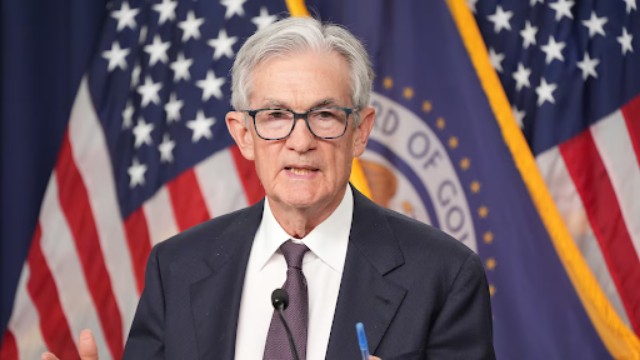
North American stock markets drop sharply as tensions rise over possible new tariffs between the U.S. and China.
North American stock markets tumbled on Thursday, wiping out gains from the day before, as news broke that U.S. tariffs on Chinese goods will be far steeper than expected — hitting 145 per cent. The White House announcement rattled investors, reigniting fears of a prolonged trade war and global economic fallout.
The Toronto Stock Exchange's S&P/TSX composite index dropped sharply by 712.16 points, closing at 23,014.87. South of the border, Wall Street suffered a brutal day. The Dow Jones Industrial Average fell by 1,014.79 points to finish at 39,593.66. The S&P 500 lost 188.85 points, closing at 5,268.05, and the tech-heavy Nasdaq plunged 737.66 points, ending the day at 16,387.31.
Markets had briefly rallied on Wednesday after former President Trump announced a temporary pause on some tariffs introduced the week before. However, his decision to stick with a baseline 10 per cent levy — along with the fresh announcement of an even higher 145 percent rate — caused investor optimism to vanish just as quickly as it had returned.
“This kind of market turbulence is something we haven’t seen since the global financial crisis or the pandemic,” said Brian Madden, Chief Investment Officer at First Avenue Investment Counsel. “Until some calm returns, we’ll keep seeing the markets pulled in opposite directions.”
Madden pointed out that Canada’s markets, though shaken, fared slightly better than those in the U.S. He credited this to the TSX’s strong exposure to gold, which investors often flock to in times of crisis. On Thursday, gold surged as traders sought safer ground amid growing instability.
The June gold contract rose by a hefty US$98.10, settling at US$3,177.50 an ounce. Copper also saw gains, with the May contract increasing 14 cents to US$4.34 per pound.
Meanwhile, oil prices slid. The May crude oil contract fell US$2.28 to US$60.07 per barrel, while natural gas dipped 26 cents to US$3.56 per mmBTU.
On the currency front, the Canadian dollar showed some strength, rising to 71.35 cents US from Wednesday’s 70.67 cents.
While Thursday brought a small relief on the inflation front — with March’s data showing slower-than-expected price increases — Madden warned this may not offer much comfort in the short term. The lower inflation could’ve given the Federal Reserve a reason to cut interest rates sooner, but ongoing uncertainty around the U.S.-China trade dispute is clouding the outlook.
Investor confidence is taking a hit, and both consumer and business sentiment are faltering, Madden said. The longer this uncertainty lingers, the more likely it is to seep into real economic performance.
Eyes now turn to Friday, when major U.S. financial firms are set to release their quarterly results. Their forecasts and guidance could heavily influence market sentiment going forward.















